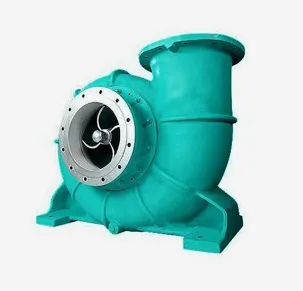English
- Afrikaans
- Albanian
- Amharic
- Arabic
- Armenian
- Azerbaijani
- Basque
- Belarusian
- Bengali
- Bosnian
- Bulgarian
- Catalan
- Cebuano
- Corsican
- Croatian
- Czech
- Danish
- Dutch
- English
- Esperanto
- Estonian
- Finnish
- French
- Frisian
- Galician
- Georgian
- German
- Greek
- Gujarati
- Haitian Creole
- hausa
- hawaiian
- Hebrew
- Hindi
- Miao
- Hungarian
- Icelandic
- igbo
- Indonesian
- irish
- Italian
- Japanese
- Javanese
- Kannada
- kazakh
- Khmer
- Rwandese
- Korean
- Kurdish
- Kyrgyz
- Lao
- Latin
- Latvian
- Lithuanian
- Luxembourgish
- Macedonian
- Malgashi
- Malay
- Malayalam
- Maltese
- Maori
- Marathi
- Mongolian
- Myanmar
- Nepali
- Norwegian
- Norwegian
- Occitan
- Pashto
- Persian
- Polish
- Portuguese
- Punjabi
- Romanian
- Russian
- Samoan
- Scottish Gaelic
- Serbian
- Sesotho
- Shona
- Sindhi
- Sinhala
- Slovak
- Slovenian
- Somali
- Spanish
- Sundanese
- Swahili
- Swedish
- Tagalog
- Tajik
- Tamil
- Tatar
- Telugu
- Thai
- Turkish
- Turkmen
- Ukrainian
- Urdu
- Uighur
- Uzbek
- Vietnamese
- Welsh
- Bantu
- Yiddish
- Yoruba
- Zulu
Telephone: +86 13120555503
Email: frank@cypump.com
Aug . 22, 2024 03:24 Back to list
Optimizing Pump Performance for Efficient Slurry Handling in Industrial Applications
Understanding Pump Slurry Essential Insights for Industry Applications
In various sectors such as mining, construction, and wastewater management, the efficient transport of materials is pivotal. One common method employed for this purpose is the use of pump slurry systems. A slurry is a mixture composed of solid particles suspended in a liquid, which can vary in concentration and viscosity depending on the application. Understanding the nuances of pump slurry systems is essential for optimizing operational efficiency, ensuring equipment longevity, and enhancing safety standards.
What is Pump Slurry?
Pump slurry refers to the mixture of solids and liquids that are transported through pipelines or pumping systems. The solids are often abrasive materials, such as sand, gravel, or mineral ore, while the liquid phase commonly consists of water or other suitable fluids. The properties of the slurry, such as density and viscosity, are critical factors that influence the selection of pumps and the design of pumping systems.
Types of Slurries
Slurries can be classified into different categories based on their characteristics
1. Dilute Slurries Comprising a low concentration of solids, these slurries are less dense and easier to pump. They are commonly found in processes such as sewage treatment and gypsum transport.
2. Concentrated Slurries With a higher concentration of solids, concentrated slurries are denser and more viscous. Their pumping demands more robust equipment, making them prevalent in mining and mineral processing operations.
3. Thixotropic Slurries These slurries exhibit changes in viscosity under stress or shear. They are less common but are important in specific applications such as certain food production processes.
Challenges in Pumping Slurry
Pumping slurries presents several challenges that can impact performance and operational costs
pump slurry

- Erosion and Abrasion The solid particles in the slurry can cause significant wear and tear on pump components. Choosing materials that can withstand such wear is crucial for extending equipment life.
- Viscosity and Density Variations Different slurry compositions can lead to varying levels of viscosity and density, complicating the pumping process. Proper sizing and selection of the pump type (such as centrifugal, diaphragm, or progressive cavity pumps) can help mitigate these issues.
- Transport Distance and Elevation Changes Long-distance pumping or elevation changes can require additional energy inputs, potentially leading to higher operational costs. Understanding the system's hydraulics is essential for efficient design.
Selecting the Right Pump
When it comes to selecting the right pump for slurry applications, several factors must be taken into consideration
- Type of Solids The nature of the solid particles—whether they are abrasive, fibrous, or corrosive—will dictate the choice of pump and materials.
- Slurry Concentration The concentration of solids will affect both the viscosity and pumping rates, requiring careful calculation to determine the optimal equipment.
- Operating Conditions Factors such as temperature, pressure, and intended pump cycle must be considered in the selection process.
Conclusion
Investing time in understanding pump slurry systems is essential for industries that rely on the transport of solid-liquid mixtures. By carefully selecting the appropriate pump, addressing the challenges posed by abrasive materials, and optimizing hydraulic designs, companies can enhance their operational effectiveness and reduce costs. As industries evolve, the advancements in pump technology and slurry management systems will play a significant role in achieving sustainable practices and operational excellence.
-
Custom Drilling Mud and Slurry Pump Supplier - High Efficiency, Tailored Solutions
NewsJun.10,2025
-
Supply Vertical Submersible Sewage Pump High-Efficiency WQ/QW Pumps Supplier
NewsJun.10,2025
-
Premium Sewage Ejection System & Pumps Efficient Waste Removal
NewsJun.09,2025
-
Premium Wholesale Slurry Pump Impellers Durable & Efficient Slurry Handling
NewsJun.09,2025
-
Top Sewage Pump Companies Durable Industrial Solutions for Efficiency
NewsJun.09,2025
-
Heavy Duty Slurry Pumps - OEM High Performance & Bulk Wholesale
NewsJun.09,2025










